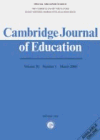
International comparisons of reading literacy: what can they tell us?
The participation of large numbers of countries in current international assessments involving reading literacy - 40 in PIRLS 2006 (administered to students in Grade 4 in primary schools) and 57 in PISA 2006 (administered to 15-year-olds in post-primary schools) - suggests that governments and other bodies find the outcomes to be useful. This article acknowledges the benefits of participating in these assessments, including the insights they provide into variation in reading achievement between and within countries, differences between engagement in reading and reading performance among males and females, associations between engagement and socioeconomic status, and instructional practices. Criticisms of international assessments, including those related to cultural bias in texts and inconsistencies in sampling, are linked to difficulties in interpreting achievement outcomes across studies and over time. Directions that PIRLS and PISA may take in the future are outlined.
Keywords: assessment; reading literacy
Document Type: Research Article
Affiliations: St Patrick's College, Ireland
Publication date: 01 September 2009
- Editorial Board
- Information for Authors
- Subscribe to this Title
- Ingenta Connect is not responsible for the content or availability of external websites
- Access Key
- Free content
- Partial Free content
- New content
- Open access content
- Partial Open access content
- Subscribed content
- Partial Subscribed content
- Free trial content